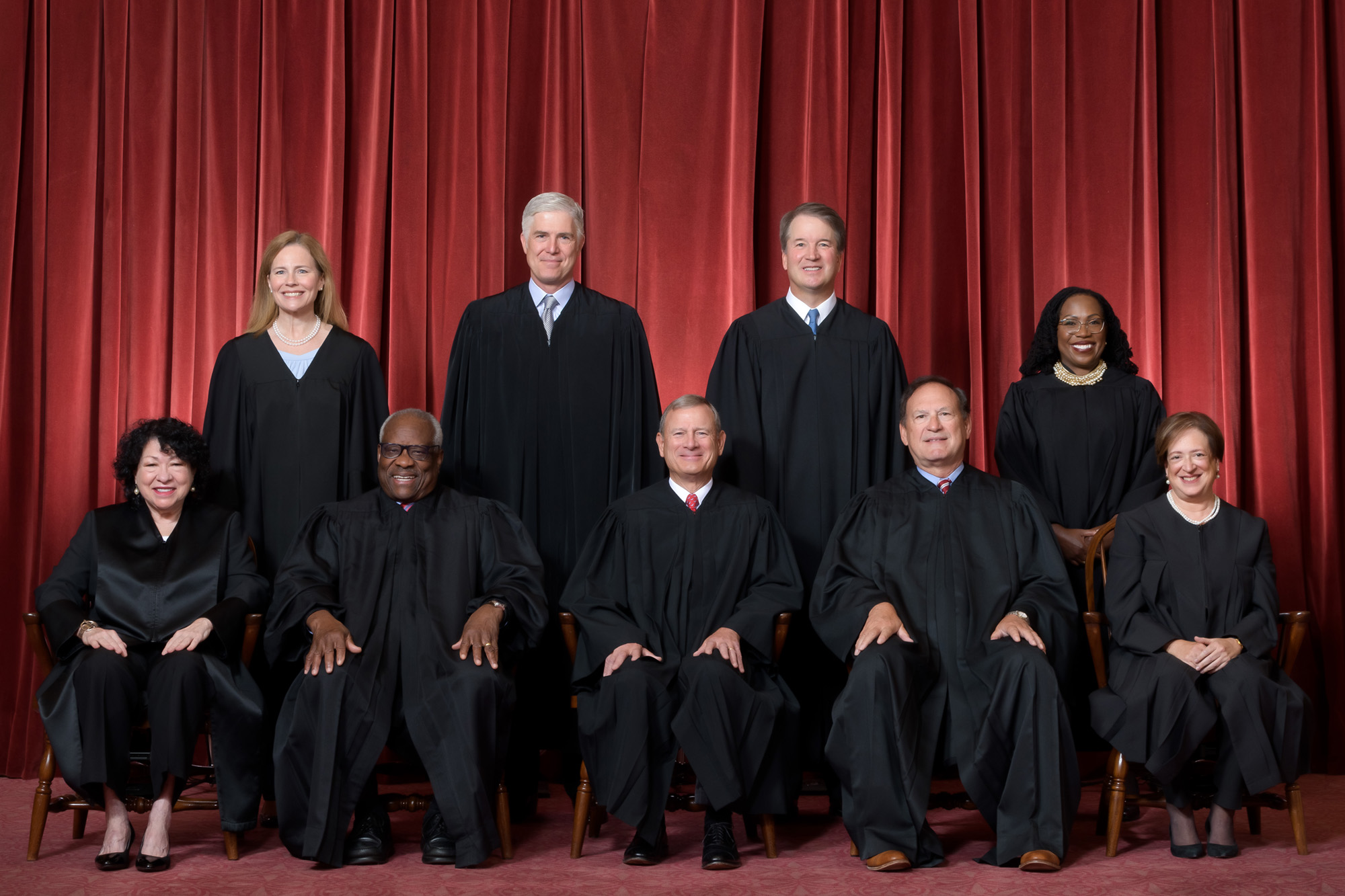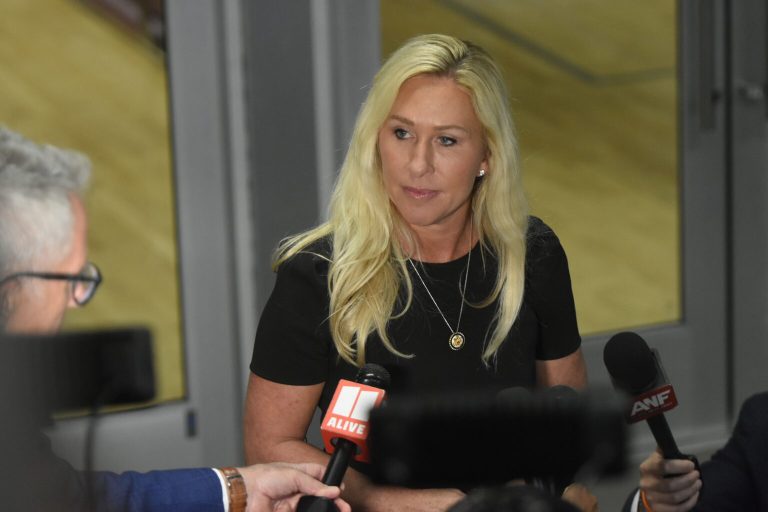The U.S. Supreme Court has agreed to take up a high-profile case centered on a Trump-era border policy that blocked asylum seekers from stepping onto U.S. soil before being turned away—a system known as “metering.” The decision marks the Court’s first major immigration-related action of the new term and signals that the justices may be prepared to address unresolved questions about presidential authority, statutory obligations at ports of entry, and the limits of asylum access under federal law.
The case, originally filed in California by the immigrant-rights organization Al Otro Lado and several individual asylum seekers, challenges the legality of the metering protocol put in place during former President Donald Trump’s first administration. Under that policy, implemented in 2018, Customs and Border Protection officers were instructed to restrict the number of asylum seekers processed at official entry points by turning individuals back into Mexico before they could physically reach American territory.
Although the Biden administration rescinded metering, the issue is far from moot. The Trump administration’s legal team has argued that future administrations must retain the option to reinstate the policy if border conditions deteriorate. The Supreme Court’s decision to take up the case suggests the justices may consider defining the boundaries of executive power in asylum screening once and for all.
How Metering Worked—and Why It Became Controversial
Federal law requires that asylum seekers who arrive at U.S. ports of entry be processed by immigration officers, regardless of whether they crossed the border legally. In practice, however, the Trump administration sharply limited how many applicants could approach inspection points at a given time.
Under metering, migrants who approached ports of entry were told by CBP personnel that the facility was “at capacity” and that they would need to wait in Mexico. In many border cities, migrants were added to informal waiting lists maintained by local NGOs, Mexican authorities, or migrant shelters—systems that varied widely in fairness and oversight.
Opponents said the policy unlawfully denied people the chance to request asylum, placing them in dangerous conditions as they waited in border regions controlled by criminal gangs. They also argued that metering effectively circumvented long-standing asylum obligations under U.S. law.
The Trump administration, however, defended the practice as a necessary response to record migration surges and limited federal resources. Officials claimed the policy prevented overcrowding at ports of entry, reduced chaotic surges toward the border, and allowed border personnel to process cases more efficiently.
The courts have so far sided with asylum seekers. A divided 9th U.S. Circuit Court panel ruled that the policy violated federal law, concluding that asylum seekers at a port of entry must be inspected—even if they technically remain on the Mexican side of the boundary.
The Legal Question: What Does It Mean to “Arrive in” the United States?
At the heart of the legal battle is a deceptively simple question: What does it mean for someone to “arrive in” the United States for asylum purposes?
The Solicitor General, D. John Sauer, argued on behalf of the Trump administration that asylum processing obligations begin only once a migrant has physically crossed into the U.S.:
“In ordinary English, a person ‘arrives in’ a country only when he comes within its borders. An alien thus does not ‘arrive in’ the United States while he is still in Mexico.”
That reading would allow federal officials to continue stopping people at the threshold of the port, barring them from stepping onto U.S. soil, and thus blocking their legal ability to make an asylum claim.
Advocacy groups contend that interpretation guts the statutory framework Congress put in place. Lawyers for Al Otro Lado argue that the administration’s position would let officials render asylum processing optional simply by stationing agents at the border line and refusing entry:
“This reading would empower officials to render inspection and asylum processing requirements wholly inoperable at ports of entry by simply blocking asylum seekers from stepping on U.S. soil.”
The Supreme Court’s eventual ruling could redefine asylum access for decades.
Case May Influence Future Border Policies
Although metering is no longer in effect, the Trump administration asked the Court to take the case anyway, insisting that the government must preserve flexibility for future crises.
They argued:
“This administration and future administrations should keep the option of reviving that practice when border conditions justify doing so.”
Given repeated migration surges and shifting border conditions, the Court’s ruling will likely influence not only the current administration but any future president who seeks to regulate the flow of asylum seekers at the southern border.
For this reason, immigration experts see the decision to grant review as an immediate victory for Trump’s legal team—even before oral arguments begin.
Biden Rescinded Metering—But Critics Say the Result Fueled Chaos
When President Joe Biden took office, his administration ended metering and adopted looser guidelines that allowed more asylum seekers to present themselves at ports of entry. Critics, including border-state officials, argued that this contributed to rising migrant numbers and worsening humanitarian strain.
Supporters defended the shift as bringing U.S. practices back in line with the law.
Regardless of political viewpoint, the repeal means the Supreme Court is reviewing a policy no longer in effect. However, because immigration patterns fluctuate rapidly, the Court’s decision will likely serve as a legal roadmap for future border enforcement strategies.
Another Major Supreme Court Win for Trump
The Court’s willingness to hear the metering case follows another immigration victory for the Trump administration this month. In a 6–3 ruling, the justices allowed the administration to pause a lower-court injunction that blocked deportations of migrants to third countries without prior notice.
The case involved migrants contesting removals to nations such as Guatemala, South Sudan, El Salvador, and Costa Rica. A district judge had ordered that migrants remain in U.S. custody until they received a “reasonable fear interview,” giving them the chance to explain any fear of persecution.
The Supreme Court’s conservative majority rejected that injunction, allowing the Trump administration to proceed with deportations under its newly revived border enforcement strategy.
That ruling—combined with the Court’s decision to take up the metering case—illustrates that immigration will once again be a defining legal battleground at the nation’s highest court during Trump’s second term.
What Happens Next
The Supreme Court will hear oral arguments early next year. A final ruling is expected by late June, meaning the decision may arrive in the middle of new immigration battles unfolding at the border and in the political arena.
Legal scholars say the ruling could clarify:
-
whether asylum obligations trigger only after physical entry
-
how much discretion presidents have in regulating asylum access
-
whether federal officers can restrict migrant movement before a legal claim is made
-
the extent to which courts can review border-control protocols
Depending on the outcome, the decision could either affirm long-standing interpretations of asylum access or empower the federal government to restrict the flow of asylum seekers more aggressively.
Either way, the stakes are enormous—for migrants waiting in Mexico, for federal agencies managing border operations, and for the political debate now dominating national headlines.

Emily Johnson is a critically acclaimed essayist and novelist known for her thought-provoking works centered on feminism, women’s rights, and modern relationships. Born and raised in Portland, Oregon, Emily grew up with a deep love of books, often spending her afternoons at her local library. She went on to study literature and gender studies at UCLA, where she became deeply involved in activism and began publishing essays in campus journals. Her debut essay collection, Voices Unbound, struck a chord with readers nationwide for its fearless exploration of gender dynamics, identity, and the challenges faced by women in contemporary society. Emily later transitioned into fiction, writing novels that balance compelling storytelling with social commentary. Her protagonists are often strong, multidimensional women navigating love, ambition, and the struggles of everyday life, making her a favorite among readers who crave authentic, relatable narratives. Critics praise her ability to merge personal intimacy with universal themes. Off the page, Emily is an advocate for women in publishing, leading workshops that encourage young female writers to embrace their voices. She lives in Seattle with her partner and two rescue cats, where she continues to write, teach, and inspire a new generation of storytellers.









